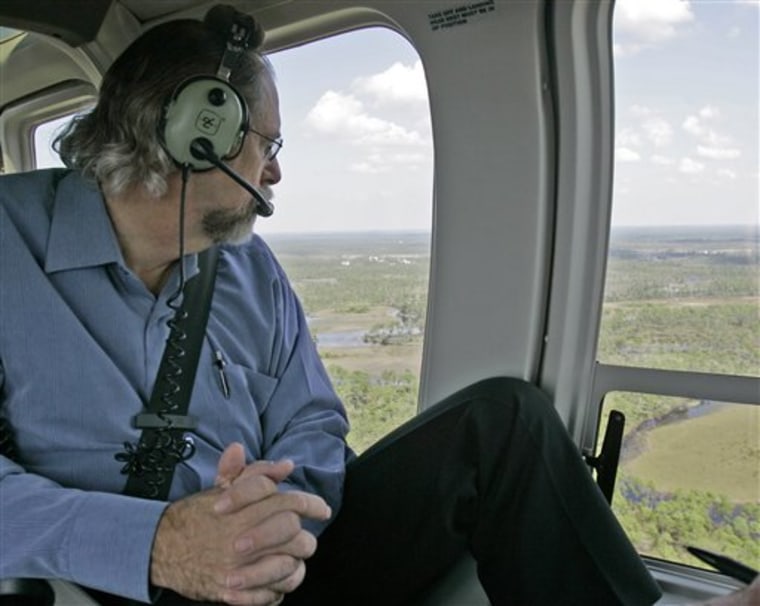Looking out over the vast Everglades, it’s clear this is not the Florida of yesteryear.
Lake Okeechobee, a backup drinking water source for five million people and the heart of the Everglades, sits at a record low. Crop losses are expected to near $1 billion. And the worst is yet to come. Green will soon turn brown, wide pools of water diminished to mere puddles.
Peering down on the lake from a helicopter on Tuesday, Carol Wehle, executive director of the South Florida Water Management District, marveled at its wide patches of dry Okeechobee shoreline that are typically covered in water.
With below average rainfall for a second straight year, and drought predicted to continue, South Florida water managers are warning residents to brace for severe shortages as the seven-month dry season begins.
“You worry about being able to supply water. You worry about how long it’s going to take for the lake to recover,” Wehle said. “If everyone embraces the concept of water conservation, we will weather this drought.”
The district manages 2,000 miles of canals, the world’s largest single flood control operation. Constant manipulation of water is needed to ensure communities aren’t inundated during downpours and farmers and residents have water during drought. But there is little land to store water for dry times.
Agriculture in the region has already been forced to cut 45 percent of its water use. The industry, including sugar, peanuts and horticulture, could see up to $1 billion in losses.
U.S. Sugar Corp., the nation’s largest producer of cane sugar, predicts it could suffer a 30 percent loss of production, roughly $200 million.
Pumps being upgraded
The water management district is upgrading its pumps along Lake Okeechobee to ensure farms will continue getting water even if the lake drops to 7 feet, which could happen by next summer. It’s normally about 12 feet then. Without the pumps, fields could go dry since the system operates on gravity, but only at 10 feet and higher. On Tuesday, the lake sat at about 10.4 feet, some five feet below normal levels for November.
The district will also be closing off canals that typically send excess water into the ocean to store as much as possible.
Everglades restoration is also at stake.
The state has cut off the fragile ecosystem for withdrawals of any new or additional water supplies, meaning utilities will have to find new sources of water to supply demand for growth. It is the first time in history that Everglades water was deemed off-limits.
Wehle said Everglades restoration remains a priority. She said water restrictions will conserve its liquid life so restoration can move forward.
“The Everglades will be impacted by the drought but that impact will not be exacerbated by the impacts of man,” Wehle said.
'Worst possible condition'
“We’re going into the dry season in the worst possible condition,” said Sara Fain, of the National Parks Conservation Association.
Without water, “the entire system gets off balance,” Fain said, adding that year-round water restrictions are crucial if the wetlands are ever to recover.
Earlier this year, South Florida was under the most severe water restrictions with communities forced to cut back outside watering to once a week. The district said those restrictions will likely return by December, and year-round restrictions are being considered.
The entire Southeast is in a pinch, and experts say less winter precipitation is expected because of La Nina conditions in the Pacific.
“Overall, I think the Southeast is going to come through this,” said Michael Hayes, director of the National Drought Mitigation Center at the University of Nebraska at Lincoln. “The question is, what lessons will we learn and how can we better prepare ourselves so the impacts of the next drought are not as severe?”
